There are plenty of questions that are asked about the difference between a period and early pregnancy bleeding. At the same time, many people do wonder why pregnant women don’t get periods. Claim Your 20 Free Pregnancy Tests – Click Here
Before the differences are compared, let’s look at menstruation, so that there is a greater understanding as to why women get periods every month.

The way a woman’s cycle works is that in the very beginning (after the last period), hormones will help the development and growth of a follicle, which is where the egg is. As the hormones are helping the development of the egg, the endometrium (the lining of the uterus) begins to thicken with tissue and blood to allow a fertilized egg to implant. That is, given that the environment is soft and spongy to allow that to happen, then the egg that is being developed for that month can be fertilized.
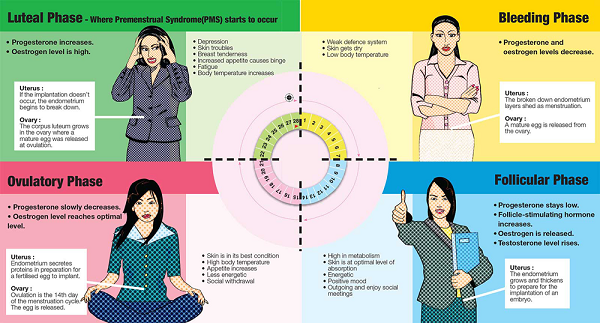
However, if fertilization doesn’t happen, the egg dies and about 2 weeks after that, hormone levels drop because the body knows pregnancy did not occur, then the tissue and blood that was building in the uterus breaks away and is discharged for that cycle through the vagina. That is the period that women get each month, unless they are pregnant.

Periods usually last 2-8 days, and happens once a month unless there are hormonal imbalances such as polycystic ovarian syndrome (PCOS) or dietary changes, extreme stress, weight changes and illness that can come into play which can cause periods to be extremely irregular. Most of the time though, bleeding lasts from 3 to 5 days as the average period is about 4 days. The amount of blood discharged varies from 1 to 5 ounces, as heavier periods can create more discomfort.
The other term for the period is menses, and girls begin to menstruate when puberty starts which can be anywhere from ages 9-15. Most girls get their first periods when they are between 11-13, and most girls can only use sanitary pads each month to soak up the blood. However older girls and women often use tampons which are inserted into the vagina where the menstrual flow is soaked inward.
Many girls and women usually have no issues when they are on their periods, however in many cases the symptoms of premenstrual syndrome (PMS) can be a bit off-putting, which includes cramps and aches in the lower abdomen, sore breasts, headaches and fatigue.
PMS symptoms can also range in severity as well whereas some women may get a little headache and some cramping before their period comes, or they may have depression, anxiety, mood swings, bloating, weight gain, dizziness, and cravings for starchy and sweet high caloric foods. And symptoms can also vary month to month, while some months the woman has very mild symptoms and the next month the symptoms are more pronounced. PMS will disappear once the period is in full force.

Periods start at puberty and end at menopause when there are no more eggs, and most women are menopausal between the late 40’s to late 50’s. The age of when the woman first started menstruating does not necessarily indicate when she will become menopausal. The only time women will not get periods between puberty and menopause is if they are either pregnant or breastfeeding (though some breastfeeding women get light periods).

Pregnant women do not get periods because once the ovum is fertilized, it implants in the endometrium that was building during the cycle. Pregnancy hormones and high progesterone levels will keep the lining intact in order to support the growing fetus, where eventually the placenta will attach. The placenta is the lifeline to a developing fetus as it passes the oxygen which the mother breathes to the fetus as well as everything she eats and drinks. Therefore if the lining is kept intact, then it will stick and no period will result.
However, even though pregnant women do not get periods in early pregnancy, bleeding can still happen.

Because women know that periods will not happen during pregnancy, it is always alarming whenever spotting or bleeding does indeed happen during early pregnancy – or any time in the pregnancy for that matter.
After all, bleeding is what you don’t want to see when pregnant!
However, it doesn’t always mean anything is wrong if some there is early pregnancy bleeding or spotting. This can be a very common early pregnancy symptom.
Unfortunately, if there is more than just a little pink or brown spotting, many times bleeding in early pregnancy can be indicative that a miscarriage is on the way since the hormone levels are dropping, hence the endometrium begins to shed.
This is another reason why pink or red on your underwear is always a cause for worry to pregnant women, whether warranted or not.
Approximately half the time when women experience bleeding in early pregnancy, it’s a sign of miscarriage or other problems, and half the time there are no problems at all. Benign causes of early bleeding in pregnancy will be covered first.

Even though anytime a pregnant woman experiences bleeding, she must always consult her doctor or even go to the ER because even if there are reasons for bleeding are not to worry about- it can not still be ignored. However, there are instances when bleeding can be normal in pregnancy that do not indicate a problem at all:
Implantation Bleeding – Implantation bleeding can happen between 6 and 12 days after conception, and women will have different types of experiences with implantation bleeding, whereas some women don’t experience it at all. This kind of bleeding happens when the fertilized egg is fixing itself into the uterus, hence some blood through the vagina can be shed. Some women will have light spotting for a few hours, whereas others will have actual bleeding for a few days, as the coloring may be a little different ranging from pink to brown which indicates old blood.
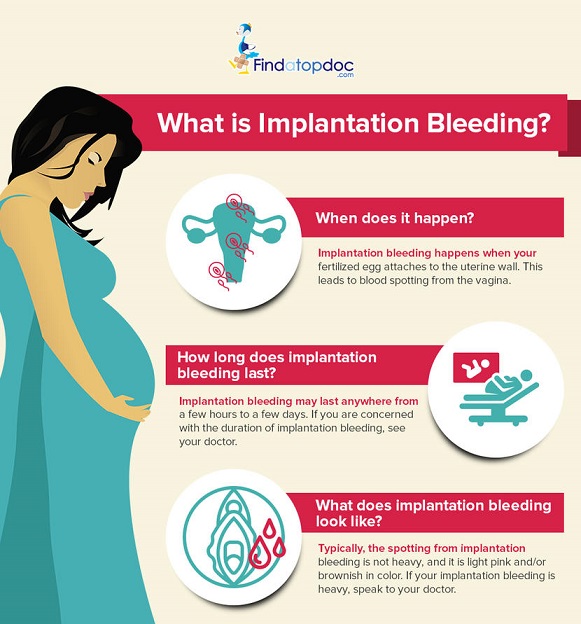
Implantation is oftentimes easily mistaken for a period.
And some women who think they may be 4 weeks pregnant due to the “second” cycle being late are shocked to find out that they are actually 8 or 9 weeks along due to this! Quite a rare treat for these women who experience implantation bleeding to jumpstart their pregnancies! This is especially so if they do not have many pregnancy symptoms especially when it comes to fatigue and nausea.
Breakthrough Bleeding – Breakthrough bleeding occurs when the pregnancy hormones cover up the menstrual cycle, however the cycle still continues for a short time and “periods” could be lighter too since most of the endometrium is intact so it supports the growing fetus.
Therefore, it will appear the period is still happening monthly but in fact periods do not happen during pregnancy, so it is breakthrough bleeding instead. This explains those stories about those women who were shocked when they found out they were pregnant when they were in labor! They must have not only had breakthrough bleeding, but no real pregnancy symptoms, and maybe they figured they had gained weight and had gas (which would have explained fetal movements) until they ended up going into labor.
Though it’s still a wonder these stories could ever really happen!
Late Placental Development – Other reasons for bleeding in early pregnancy is when the placenta develops which comes later than implantation bleeding (though many times that kind of bleeding is more like spotting which is consisted of old blood which has a brownish appearance.)
Intercourse – Intercourse is another reason for early pregnancy bleeding due to the fact that the cervix is sensitive and tender. So bear that in mind!
Pelvic Cavity and UTIs – Pelvic cavity and urinary tract infections also cause bleeding, and that must be taken care of right away, as infection can affect the progressing pregnancy.
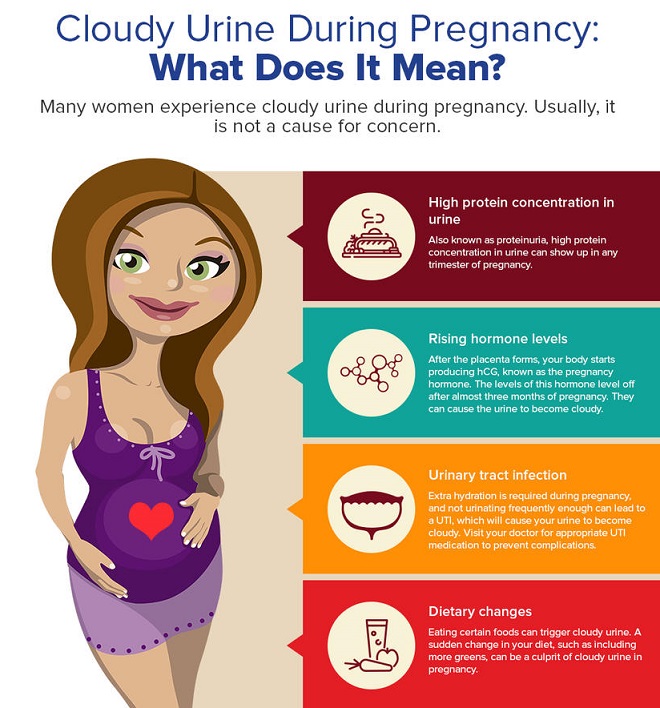
Even though those mentioned above will cause bleeding in early pregnancy, they are not reasons to be concerned about other than the infections as that needs to be cleared by antibiotics.
These types of early pregnancy bleeding are OK – and no cause for alarm.
However, there are times when early pregnancy bleeding can unfortunately indicate complications such as miscarriage, ectopic, and molar pregnancy.

Miscarriage – Unfortunately, it has been said that between 15% and 20% of pregnancies will end in miscarriage, and most of the time it happens within 12 weeks of pregnancy. The majority of the time, the reasons miscarriages happen is due to nature’s way, or your body’s way, of dealing with a pregnancy which was not continuing as it should. This could be caused by severe chromosomal problems to the point that a baby could not be successfully created.
Older women do experience more miscarriages, and this is the reason as chromosomal problems are more commonplace with decreasing egg quality.
Other reasons for miscarriage may be immune system problems from the mother while occasionally some women have an autoimmune response to pregnancies (the body thinking the fetus is a foreign body and is attacked by the immune system). Other causes include low progesterone levels that cannot maintain a pregnancy.
Usually a miscarriage is marked most significantly by spotting and bleeding in the first trimester, coupled with cramping and/or backache. Occasionally no bleeding happens when a miscarriage occurs because the body still believes it is pregnant and in those cases they are known as missed miscarriages.
However, the symptoms of miscarriage generally are vaginal spotting or bleeding, passing tissue through the vagina, and cramps that are even stronger than menstrual cramps that are felt in the lower stomach area.

Some pregnant women who know a miscarriage is on its way when they have been experiencing morning sickness and all of a sudden it disappears before 12 weeks gestation instead of it easing off in the second trimester. Or the opposite can happen whereas a pregnant woman who didn’t have a lot of sickness and all of a sudden it comes on can be a sign, before the bleeding starts.
Ectopic Pregnancy – An ectopic pregnancy is when the pregnancy implants somewhere outside the uterus, such as in one of the fallopian tubes. In rare cases, implantation can happen in the cervix or stomach area. Approximately 1 in 60 pregnancies will be ectopic, and they can happen due to a condition that blocks or slows down the movement of the fertilized egg through the fallopian tube to the uterus.
Previous ectopic pregnancies that women have had can increase the odds of it happening again, as well as having a previous pelvic surgery, endometriosis which is the lining growing outside of the uterus, or an infection in the tubes. Sometimes the cause is simply unknown.
The symptoms of ectopic pregnancy are vaginal bleeding and spotting, sharp abdominal pain, and cramps that are stronger than menstrual cramps which is again felt in in the lower stomach area. Other signs are dropping hCG levels, as well as shoulder tip pain, bladder problems as well as collapsing.
“Ectopic pregnancy is a serious condition and either surgery will be needed to dissolve the pregnancy, or the patient will have to go on chemotherapy drugs that are meant to dissolve it.”
Molar Pregnancy – The last reason that spotting or bleeding can happen in early pregnancy is due to a molar pregnancy which is incredibly rare. A mole or molar pregnancy results when abnormal tissue has been growing instead of an embryo, and it occurs at the rate of 1 in 1000 pregnancies. Another term for this is GTD, which is gestational trophoblastic disease.
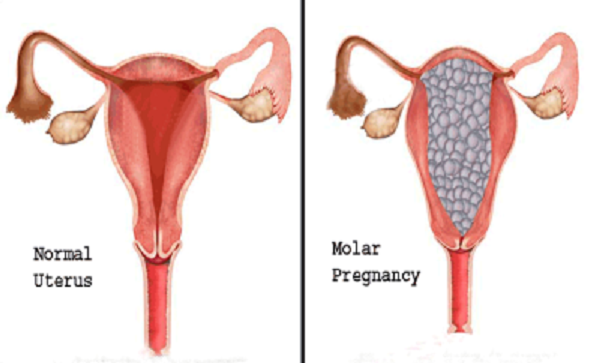
GTD is the result of a genetic error which is the abnormality of the placenta that happens when fertilization occurs.
Symptoms of a molar pregnancy are spotting or bleeding, increasing hCG levels which without an ultrasound can be mistaken as possibly having twins, lots of nausea and vomiting and high blood pressure. It is detected during an ultrasound or when no heart tone is detected. Occasionally after a molar pregnancy, a rare complication such as thyroid disease can happen.

Again if bleeding or spotting during early pregnancy happens, the first thing to do is contact your doctor right away, and use a pad or panty liner so you can be aware of the type and level of bleeding as your doctor will need to look at it. Never use a tampon, douche or introduce anything into the vagina during the bleeding.
But please don’t jump to conclusions, and try to stay positive. It could just be early pregnancy bleeding that is safe for you and your growing fetus!


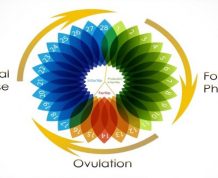

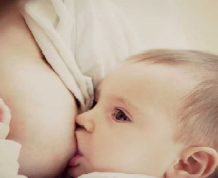





Comments